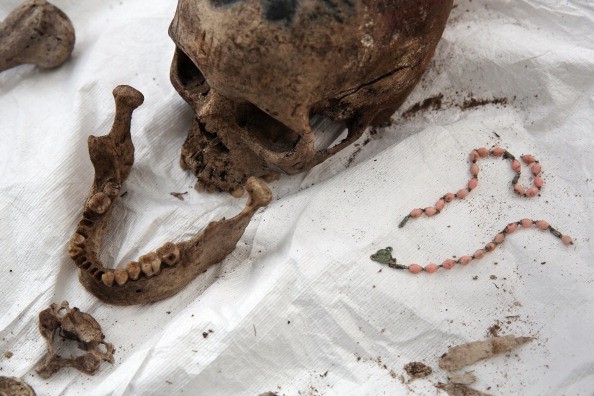Archeologists Unearthed Chilling Secrets of 'Tower of Skulls' in Mexico City
Archaeologists in Mexico have unearthed a new section of a famous Aztec "Tower of Skulls." The discovery was made on the east side of the 'Huei Tzompantli,' a grisly Aztec trophy rack.

Archaeologists in Mexico discovered another 119 human skulls and this is aside from the previously discovered 284 skulls in the Aztec's "Tower of Skulls." The discovery of the archaeologists adds up to the growing body of history in the country.
Discovery of 119 Human Skulls
One of the most favorite places of the archaeologists in the world is Mexico. The country is filled with different ancient artifacts that are yet to be discovered.
Aside from the previously discovered bones of mammoths in the previous year, Mexican archaeologists found a total of more than 500 human skulls in an Aztec site.
According to MSN, the structure called Huei Tzompantli was first discovered by archaeologists with the Urban Archeology Program (PAU) of the Mexico Government National Institute of Anthropology and History (INAH) five years ago.
Since the structure was discovered, around 484 skulls were unearthed, which dated back to at least a period between 1486 and 1502. The discovery somehow helped not only the archaeologists but as well as the historians about Mexico during ancient times.
Recently, archaeologists in Mexico said that they have found another 119 human skulls on the Eastern side of the Aztec's Tower of Skulls, according to a statement released from INAH. It is believed to be one of seven collections of skulls that stood in the Aztec capital Tenochtitlan.
Read also : New Mayan Settlement Discovered in Quintana Roo
Composition and Possible History of Human Skulls
According to the archaeologists, the human skulls found in the tower is comprised of men, women, and children who were likely killed during ritual sacrifices to the gods.
They also added that at least three skulls of children were discovered at the site and they were identified because of their smaller build and developing teeth.
INAH also added to their official statement that the site also indicates that the construction of the towers was part of the "cultural and identity practices" of the Aztecs.
Raul Barrera told Reuters, "Although we can't say how many of these individuals were warriors, perhaps some were captives destined for sacrificial ceremonies. We do know that they were all made sacred. Turned into gifts for the gods or even personifications of deities themselves."
INAH also revealed that Aztecs built many structures in the city of Tenochtitlan, now called Mexico City, during their regime.
However, these structures were destroyed after the city came under the control of Spanish soldiers and indigenous allies in the 1500s.
Archaeologists believed that this resulted in many skulls in the site that were razed and scattered. But the anthropologists and archaeologists tried to do their best to recover the fragments. This is part of Mexico's history and culture.
In fact, INAH also said that conquistadors Hernán Cortés and Bernal Díaz del Castillo mentioned them in writings of their conquests and despite the destruction, this left a lasting impression on those that witnessed them.
Subscribe to Latin Post!
Sign up for our free newsletter for the Latest coverage!

















